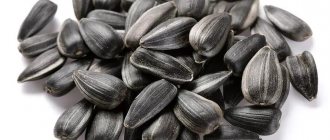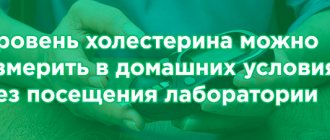March 30, 2021
Narcologists have long claimed that beer alcoholism exists. However, many still believe that beer is safe, and non-alcoholic or low-alcohol drinks are even healthy. Let's figure out whether there is any harm to health when drinking beer. Does the foamy drink contain ethyl alcohol and what are the risks for the body from one bottle? We’ll also talk about whether non-alcoholic beer is safe, and how much beer you can drink without harm to your health.
Many people simply do not want to believe that beer is harmful. They consider this drink “natural, ancient, proven, environmentally friendly.” In addition, “foam” is actively advertised, “craft breweries” appear, and so on. There are many misconceptions about this!
But the harm of beer to the body is obvious. To prove this, let's look at the composition of the drink. So, beer is malt, hops, enzymes and preservatives that are mixed and undergo the fermentation process. As a result, the number of poisons is only increasing. The drink is also enhanced with chemical components. For example, it contains texture stabilizers, sugar, saccharin, and artificial colors. After fermentation and fermentation, aldehydes, ethers, methanol and other poisons are formed in large quantities. Natural malt beer is not so dangerous, but modern production practically does not use this technology. They “make” beer by mixing different chemical components and water. It is unacceptable to say that such a drink may have any benefits.
Dark, light, unfiltered and even non-alcoholic beer are equally harmful. A “live” foamy drink today is nothing more than a marketing ploy that has nothing to do with reality. Just think about it - hundreds of liters of live beer arrive in stores every day. How and where are they stored? What are the delivery times? It becomes clear that it is not possible to produce beer in 1-2 days, deliver it to a retail outlet and sell it. Therefore, all manufacturers’ assurances about the absence of preservatives are simply an “advertising ploy” that is far from reality. For example, non-alcoholic beer will not contain ethanol. But the amount of enhancers, dyes and preservatives here will be off scale, since the person, the buyer, expects to get a certain taste.
The effect of drinking beer on the human body
Beer alcoholism is as common as vodka and wine alcoholism. And just as dangerous. Frequent intoxication and systematic intake of alcohol-containing drinks simply cannot but affect the body.
Ethanol contained in beer penetrates cellular barriers more easily than others, is deposited in adipose tissue, poisoning the body, and affects the production of essential hormones.
Sometimes manufacturers claim that beer contains a lot of minerals and organic substances, as well as vitamins. It is claimed that the minerals come from the malt. However, this is only true for unfiltered beer. And then, there are restrictions. For example, malt is rich in B vitamins, but during technological processing the amount of vitamins drops to an insignificant level. For example, to get the daily requirement of vitamin B1 into the body, you need to drink 10 liters of beer a day, and the harm in this case will be significantly higher than the expected benefit!
The danger is that beer contains a lot of potassium. Because of this, the kidneys significantly increase urine production, sodium and chlorine are washed out of the body, and this, in turn, leads to demineralization of the body.
Beer also contains resins, which give the drink a bitter taste. They are prone to oxidation and polymerization, which is why they become aggressive psychoactive compounds, providing a hypnotic effect. Also, these resins stimulate gastric reflex, causing acid reflux, reflux and other negative reactions.
In addition, beer contains biogenic amines. They increase blood pressure, cause headaches and promote kidney damage. And the most unpleasant thing is that beer contains phytoestrogens. They come from hops. Their danger lies in the fact that they significantly change the hormonal background of the body. It is because of them that a change in endocrine status occurs: in men this is feminization, and women become masculine.
Narcologists also say that beer alcoholism develops 4 times faster than vodka alcoholism.
Harm of beer to organs and systems
How much beer can you drink without harm to your health? Even one glass can be dangerous! And regular use disrupts the functioning of all organs and systems:
- The stomach suffers due to the fact that ethanol and chemical enhancers irritate the mucous membrane. This impairs the absorption of nutrients from food and provokes gastritis. Beer alcoholics often suffer from heartburn and bowel problems.
- The liver passes all poisons through itself. Therefore, even “safe” beer provokes the development of such dangerous diseases as cirrhosis, hepatitis, and cancer. Even with a “mild form” of alcohol dependence, the liver increases in size, but copes with its functions worse.
- The heart and circulatory system suffer greatly from the fact that alcohols quickly penetrate the blood. Therefore, even a glass of beer can provoke heart rhythm disturbances, increased blood pressure, severe redness of the face, and headache. Regular consumption of foam leads to hypertension. Also, beer alcoholics are more likely than others to suffer from varicose veins. In addition, they develop “bull heart” syndrome, when the organ significantly increases in size.
- Kidneys. Beer irritates the kidney tissue and its filtration capacity decreases. Due to the diuretic effect of beer, various microelements are washed out of the body, including potassium, calcium and magnesium, which are so necessary for the heart, bones and nervous system. Of course, the urinary system suffers from double or even triple the load. Subsequently, this leads to urolithiasis, pyelonephritis, colitis or oncology.
- Brain and nervous system. Almost all alcoholics have impaired brain activity and slowed nervous reactions. Intelligence deteriorates, memory lapses appear. A person begins to behave aggressively and strangely due to the fact that brain cells die, not receiving enough oxygen. After drinking a large amount of beer, a person himself notices how he “goes dumb” and becomes unable to assimilate new information and learn.
- The load on the stomach and pancreas increases due to the fact that beer contains cobalt, and its compounds help flush out gastric juice. Cobalt is not declared by manufacturers as a component, but it is used in the technological process. It is this compound that ensures a stable foam head in the glass.
- The endocrine system completely fails. Beer disrupts male and female hormonal levels. This is manifested by uncontrolled weight gain, problems in bed, and reproductive dysfunction.
- Diseases of the oral cavity occur, as the mucous membrane is irritated, and teeth suffer due to the leaching of calcium from the bones. Those who frequently drink alcohol develop periodontitis.
- Your appearance changes for the worse, even if you drink beer only twice a week. Signs such as loose skin, bags and bruises under the eyes, brittle hair, bad breath, swelling of the tissues, and a characteristic repulsive “blush” appear.
In addition, the psyche of beer alcoholics changes greatly. They may not even be aware of it, but it is very noticeable to others. Due to intoxication of the body, brain cells are destroyed. A person becomes aggressive, impatient, nervous, and loses the adequacy of thinking. Gradually he even loses control over his actions.
Wine
Wines vary in strength and composition. The strength can vary from 9 to 25 degrees. Different varieties of grapes, fruits and berries are used to make wine. The resulting wine is white, red, rose, dry, semi-dry and sweet. Wine obtained from grapes contains many useful substances: antioxidants and vitamins. The largest amount of antioxidants is found in red wine.
Red wine can significantly improve blood composition, strengthen blood vessels and lower cholesterol levels.
Consequences for the female body
The harm of beer to the female body is a deterioration in reproductive function, hormonal imbalance, liver damage, obesity and a sharp deterioration in appearance. We must not forget the fact that women become drunk about three times faster than men.
Regular consumption of beer leads to obesity (especially considering that people prefer to drink the foamy drink with chips, crackers, and nuts). The harm of beer for a woman is manifested in the following:
- excess weight with rapid growth in the abdomen and waist (so-called visceral fat is deposited, that is, internal fat that interferes with the normal functioning of organs);
- reproductive function is impaired;
- menstrual irregularities, gastrointestinal disorders occur, gynecological problems worsen;
- a masculine appearance is acquired, facial features become coarser;
- waist disappears;
- the amount of hair on the face and body increases;
- the skin becomes sluggish, flabby, wrinkled, capillary breaks and spider veins appear;
- The likelihood of developing breast and genital cancer increases significantly due to serious hormonal imbalances.
If a nursing mother drinks beer regularly, the baby may experience epileptic seizures.
Alcohol and high cholesterol
Alcohol in moderation is allowed for high cholesterol. According to current knowledge, moderate drinking of alcoholic beverages reduces the risk of complications such as heart attack, stroke and ischemia by 25–40%. However, when drinking alcohol with high cholesterol, the side effects (in particular, drowsiness) from taking stanines (if their course is prescribed) may increase.
Alcohol does not directly affect bad cholesterol at all, so you should not expect that alcoholic drinks will help with high cholesterol. The possibility of drinking alcohol with high bad cholesterol should be discussed with your doctor, especially if a course of statins is prescribed - only then will it be possible to avoid side effects.
Consequences for the male body
Beer, like any alcohol, has an extremely negative effect on the reproductive system. For example, men are diagnosed with fatty degeneration of the seminiferous tubules. The glandular tissue of the testicles suffers the most from beer, since the ethanol contained in it quickly overcomes the blood-testis barrier.
The functions of the liver are severely affected - in particular, its ability to destroy estrogen. Often, beer alcoholics develop cirrhosis of the liver, which inhibits the gonadotropic functions of the pituitary gland. And this, in turn, leads to atrophy of the gonads. Due to phytoestrogens, female sex hormones accumulate in a man’s body. This manifests itself as follows:
- potency seriously deteriorates;
- the nasal mucosa swells;
- breasts begin to grow;
- the pelvis expands;
- a malignant tumor may develop in the breast;
- sexual weakness occurs;
- a lot of fat is deposited in the waist area (the characteristic “beer belly”);
- Testosterone production drops significantly;
- hair growth and quantity are reduced, which soon leads to baldness;
- excess weight appears, and with it a predisposition to diabetes;
- the timbre of the voice changes.
Over the years, a male beer alcoholic becomes more and more like a woman.
A little history of brewing
Beer is one of the oldest drinks, as evidenced by archaeological research. Thousands of years ago, people prepared a drink from cereals, which in terms of preparation technology is very close to beer. The ancient Sumerians had more than 15 varieties of this drink and the saying “not knowing beer is not knowing joy.”
The ancient Egyptians, having borrowed the secrets of brewing from the Sumerians, also joined the army of fans of the foamy drink. The process of making beer is immortalized in relief images on Egyptian tombs. In Egypt, beer was a very popular and even democratic drink - everyone drank it, both peasants and nobles. The drink was valued for its taste and properties to quench thirst and improve tone.
From Egypt, beer spread to Ethiopia, then to Persia, and beyond. In Europe, beer, already very close to modern beer, began to be brewed in the 13th century.
In Rus', intoxicating drinks have long been brewed from cereals and honey, for example, sbiten. Beer came to Russia during the time of Peter I, who ordered brewers from Europe; then beer was sold only in drinking establishments. The first breweries began operating in Russia at the end of the 18th century. Since then, we love and drink beer, some moderately, some not so much. But the majority of our citizens believe that beer is an excellent drink.
Why beer is dangerous for teenagers
Unfortunately, teenage alcoholism often begins with beer. For a developing organism, any alcohol-containing drinks are very dangerous. For example, light filtered beer is practically devoid of characteristic bitterness, is very easy to drink, but quickly causes intoxication. Its consequences for a fragile organism can be very different. For example, it has been proven that excessive beer consumption in adolescence can cause ulcers, diabetes, and myocarditis.
But the worst thing is that the psyche, which in adolescents is not yet fully formed, comes under attack. A young man who likes to spend the evening with a glass of “foam” gradually degrades, becomes asocial, and can easily fall under the influence of criminal elements.
Vodka
The components of forty-proof vodka are grain alcohol and water. To improve the taste of the drink, manufacturers add various components from plants: fruits, berries, oak bark, birch leaves, spices, flavorings. Small doses of vodka dilate blood vessels, increase blood circulation, and relieve symptoms of atherosclerosis. But you need to know that drinking vodka and cholesterol levels are directly related. Abuse of vodka will lead to high cholesterol and worsen human health. In addition, this drink can increase blood sugar.
The dangers of drinking non-alcoholic beer
If you ask how to drink beer without harm to your health, sometimes you get an answer with recommendations for non-alcoholic beer. However, this is a fundamentally wrong approach. There is no “safe beer” or “low alcohol drinks”. For example, one half-liter bottle of light beer contains the same amount of alcohol as 60 grams of vodka. But a beer lover will most likely not limit himself to one bottle. He can drink 2 liters in an evening, and this is the same as a glass, 240 grams of vodka (or half a bottle, just think about it!).
The term “low-alcohol drink” itself was created by marketers to remove the fears of young people. First of all, “drink” is more associated with juice than with booze. And “low-alcohol or non-alcoholic” seems to hint that there is no alcohol in the composition and any dose will be safe. However, those who have at least once been “involved” in low-alcohol drinking know how it gives them a headache the next morning. Drinking such a chemical mixture is simply dangerous!
Energy drinks also contain alcohol. Yes, and non-alcoholic beer can contain them, albeit in small quantities. Sometimes you can hear that a person simply quenches his thirst in this way. But don’t deceive yourself: there are a lot of harmful substances under the cap of a beer bottle, and thirst is best quenched with clean water. In addition, ethanol in such “drinks” binds water and removes it from the body. In severe cases, it can even lead to dehydration. And, of course, there can be no talk of any quenching of thirst!
The danger of non-alcoholic beer is that you get used to it as a ritual, and over time you easily switch to strong drinks. In addition, non-alcoholic beer contains cobalt, which poisons the body.
Whiskey
The consumption of whiskey (40 - 45 degrees) can be justified by the properties obtained during production. Wheat, rye, and barley are used as raw materials for preparing the drink. A complex production mechanism, in which cereal seeds are sprouted and hot-dried, allows the grains to retain beneficial substances. Whiskey contains many antioxidants that thin the blood and improve the condition of the vascular system. Ellagic acid, which is part of the drink, protects blood vessels from the formation of cholesterol plaques and tones the heart.
How much beer can you drink without harming your health?
So, is it possible to drink beer without harm to your health? It turns out yes. It is important to avoid two factors - large quantities and regularity. According to many brewers who monitor the quality of the drink, a dose of no more than 600 ml for men and 400 ml for women per week is considered safe. That is, you can drink a small bottle of 0.2 liters or one 0.5 liter, but not more than 1-3 times a week.
In women, the permissible dose is lower, since they are more sensitive to ethanol in general and to hormonal imbalances in particular.
It is also recommended to choose unfiltered beer, as it contains lower amounts of harmful components. But it's worth remembering. that teenagers, athletes, pregnant and lactating women, as well as anyone who has been diagnosed with alcohol dependence in the past should completely avoid drinking the foamy drink. Even non-alcoholic beer can trigger a relapse in a former alcoholic. And this “drink” cannot be called useful. Therefore, it is better not to drink it at all!
Now you know how much beer you can drink without harm to your health and you can take care of yourself by choosing the right “addition” to dinner or to friendly get-togethers.
Reviews and warnings
The attitude of medical specialists towards attempts to use beer to treat atherosclerosis and other cholesterol diseases is quite cautious. Not all patients who see a connection with alcohol as a cure for cholesterol will strictly adhere to the norms and its daily consumption. In this case, cholesterol may increase and worsen the course of the disease. But does beer raise cholesterol when drunk in moderation? Now that we have examined the entire mechanism of interaction between beer and cholesterol, we can assume that no .
Of course, it is impossible to eradicate this disease only with an intoxicating drink. However, by observing a moderate amount of a high-quality product, along with proper nutrition, a healthy lifestyle and the recommendations of doctors, we can alleviate the course of cholesterol disease and create the ground for further recovery.
Types of drink
Beer is made from malt or barley wort and hops through fermentation using brewer's yeast. Today there are more than 1,000 types of beer. In this case, the foamy drink is divided into several categories.
By color, beer can be divided into dark, light, red and white. The color depends on the amount of dark malt content and the degree of roasting.
Beer also varies greatly in strength. Light beer contains up to 6% alcohol, while strong beer can contain up to 14%. In the USA, beer with a strength of 27 degrees is even produced.
There are different categories of beer depending on the raw materials and method of preparation.










